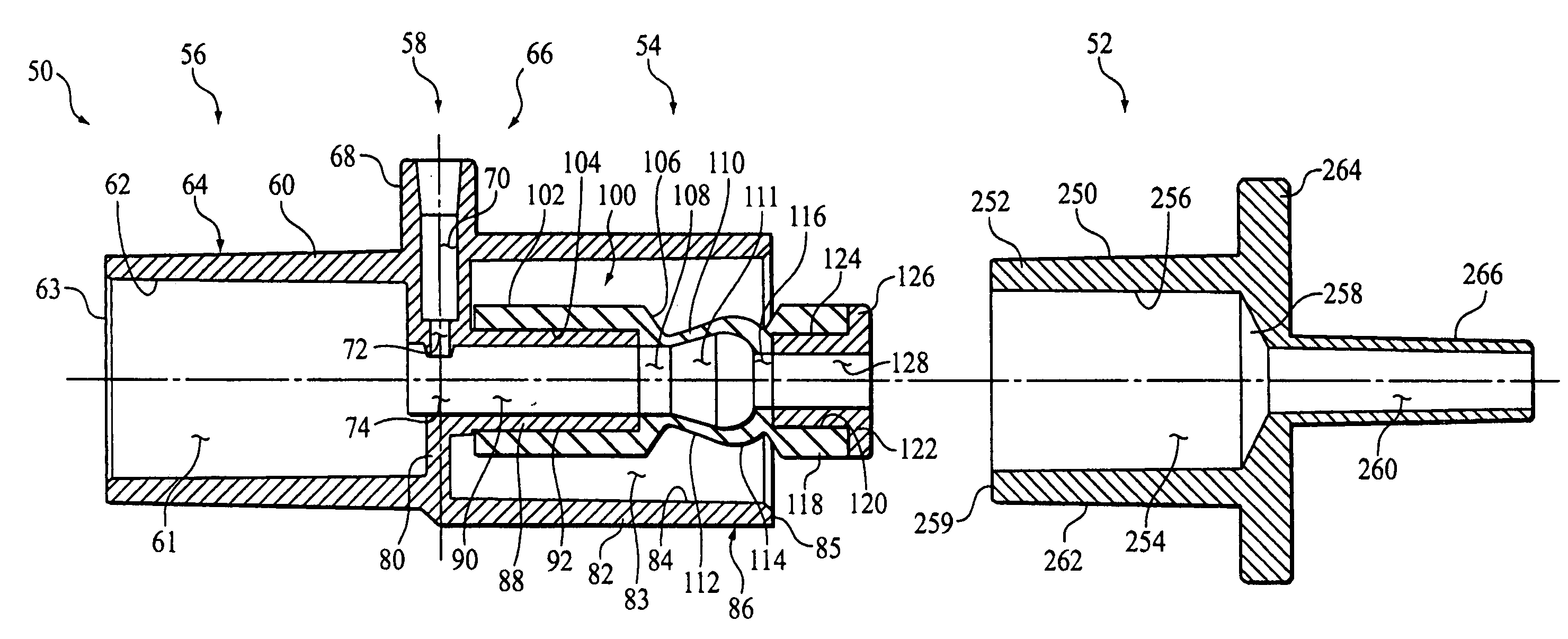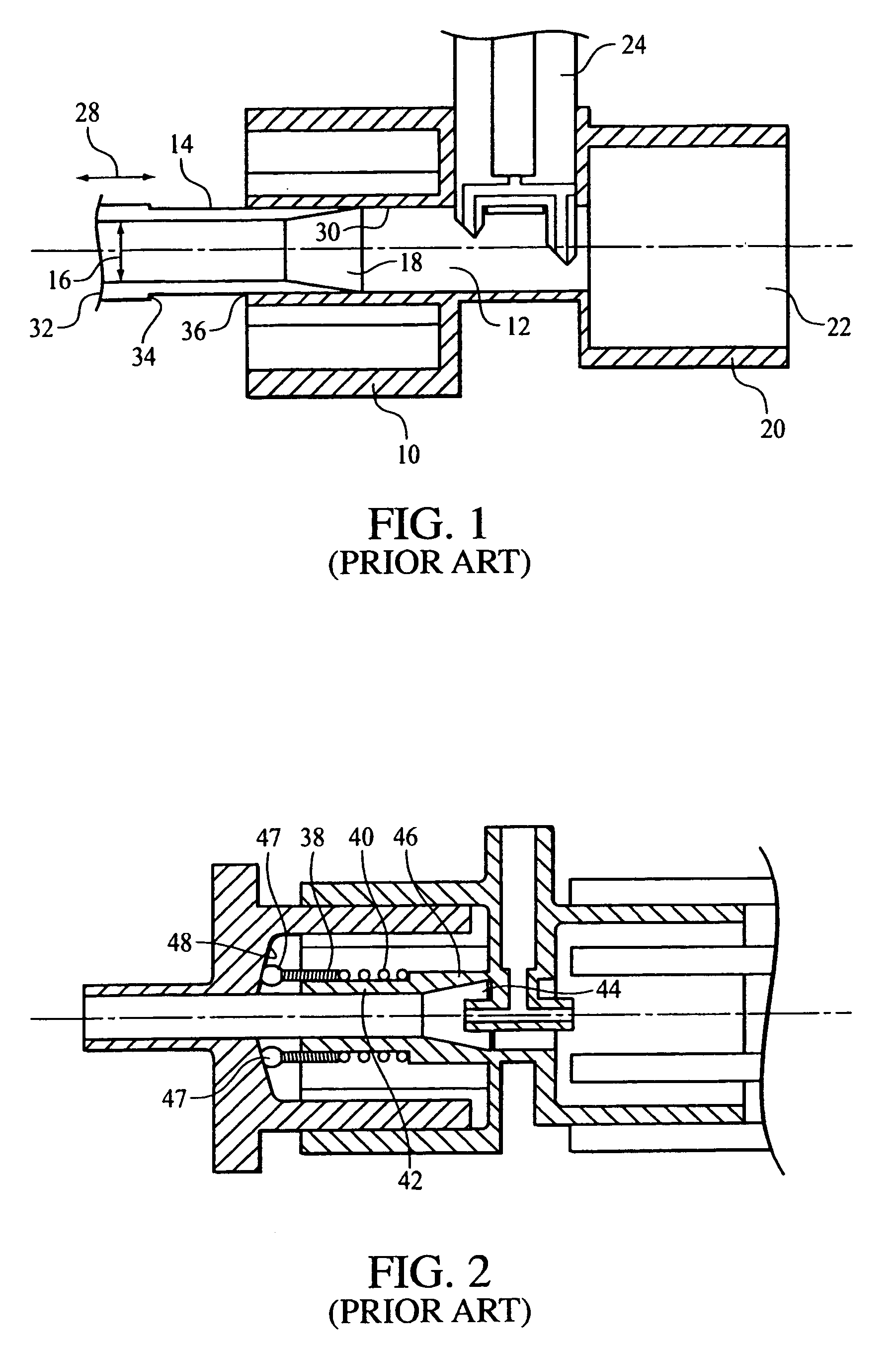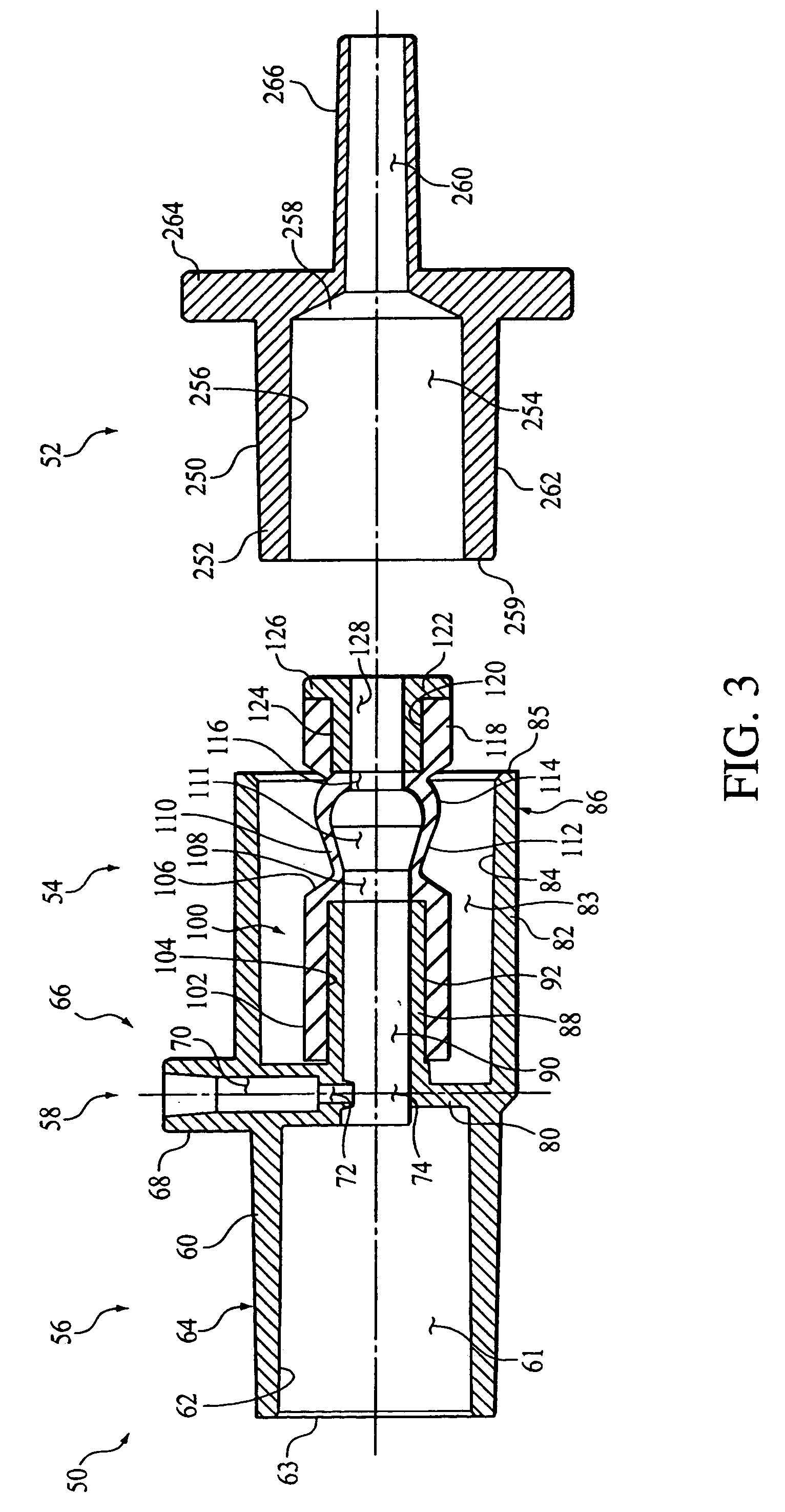Low deadspace airway adapter
a low-dest space, air-way technology, applied in the direction of adjustable joints, breathing protection, other medical devices, etc., can solve the problems of high sampling rate, high cost of anesthetic agents, and inability to meet the needs of low-tidal volume patients, so as to promote gas flow and minimize the dead space in the airway.
- Summary
- Abstract
- Description
- Claims
- Application Information
AI Technical Summary
Benefits of technology
Problems solved by technology
Method used
Image
Examples
third embodiment
[0065]FIG. 8 illustrates a sampling airway adapter 300 according to the principles of the present invention. It can be appreciated that this embodiment is structurally similar to that shown in FIGS. 3–6, except for the manner in which a compressible member 302 is attached to a tubular first portion 304 of adapter 300. In this embodiment, a first end portion 306 of compressible member 302 is operatively coupled within first portion 304. As in the previous embodiment, a bore 305 is defined in the compressible member from first end portion 306 to and a second free end portion 308.
[0066]In the illustrated exemplary embodiment of the invention, first end portion 306 of compressible member 302 includes a flange 309 disposed at the first end portion about its periphery. Flange 309 frictionally engages a wall 310 of a bore 312 to maintain the compressible member in place within first portion 304 of the adapter. It is to be understood that other techniques and configurations for attaching th...
fourth embodiment
[0068]FIGS. 9–11 illustrate a sampling airway adapter 400 according to the principles of the present invention. It can be appreciated that this embodiment is structurally similar to that shown in FIGS. 3–6, except for the structure for compressible member 402, which is somewhat similar to that shown in FIG. 7. In the illustrated embodiment, compressible member 402 is attached to a tubular first portion 404 of adapter 400 via a protrusion 406. However, the present invention contemplates attaching compressible member 402 to tubular first portion 404 as shown in FIG. 8. As in the previous embodiments, a bore 408 is defined in the compressible member from first end portion 410 to and a second free end portion 412. Bore 408, in the illustrated embodiment, has an effective flow path diameter that is substantially equal to a bore defined in protrusion 406.
[0069]In the illustrated exemplary embodiment of the invention, first end portion 410 of compressible member 402 is disposed around, and...
PUM
 Login to View More
Login to View More Abstract
Description
Claims
Application Information
 Login to View More
Login to View More - R&D
- Intellectual Property
- Life Sciences
- Materials
- Tech Scout
- Unparalleled Data Quality
- Higher Quality Content
- 60% Fewer Hallucinations
Browse by: Latest US Patents, China's latest patents, Technical Efficacy Thesaurus, Application Domain, Technology Topic, Popular Technical Reports.
© 2025 PatSnap. All rights reserved.Legal|Privacy policy|Modern Slavery Act Transparency Statement|Sitemap|About US| Contact US: help@patsnap.com



